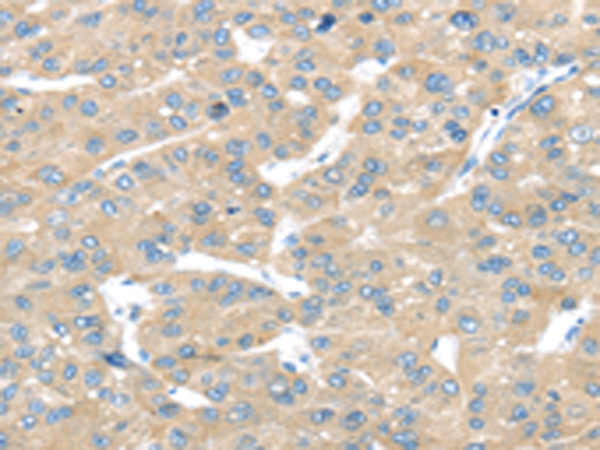

| WB | 咨询技术 | Human,Mouse,Rat |
| IF | 咨询技术 | Human,Mouse,Rat |
| IHC | 1/25-1/100 | Human,Mouse,Rat |
| ICC | 技术咨询 | Human,Mouse,Rat |
| FCM | 咨询技术 | Human,Mouse,Rat |
| Elisa | 1/2000-1/5000 | Human,Mouse,Rat |
| Aliases | MILT1; OIP106 |
| Host/Isotype | Rabbit IgG |
| Antibody Type | Primary antibody |
| Storage | Store at 4°C short term. Aliquot and store at -20°C long term. Avoid freeze/thaw cycles. |
| Species Reactivity | Human |
| Immunogen | Fusion protein of human TRAK1 |
| Formulation | Purified antibody in PBS with 0.05% sodium azide and 50% glycerol. |
+ +
以下是关于TRAK1抗体的3篇参考文献,包含文献名称、作者及摘要概述:
---
1. **文献名称**:*TRAK1 is a neuronal trafficking adaptor that modulates mitochondrial motility and regulates anxiety-related behaviors*
**作者**:Koutsopoulos OS, et al.
**摘要**:本研究利用TRAK1抗体探究其在小鼠神经元中的功能,发现TRAK1通过调控线粒体运输影响突触功能,基因敲除小鼠表现出线粒体运动异常及焦虑样行为,提示TRAK1与神经精神疾病相关。
2. **文献名称**:*Dysregulated Mitochondrial Trafficking in Huntington’s Disease: Role of Rab7 and TRAK1*
**作者**:Wang X, et al.
**摘要**:通过TRAK1抗体染色和共聚焦成像,研究揭示亨廷顿病模型中TRAK1与Rab7蛋白的相互作用失调,导致线粒体逆向运输障碍,可能参与疾病病理进程。
3. **文献名称**:*TRAK1 interacts with Parkinson’s disease-associated LRRK2 and modulates its kinase activity*
**作者**:MacAskill AF, et al.
**摘要**:使用TRAK1抗体进行免疫共沉淀实验,发现TRAK1与帕金森病相关蛋白LRRK2直接结合,并调控其激酶活性,提示TRAK1在LRRK2介导的神经退行性通路中的作用。
---
以上研究均通过TRAK1抗体揭示了该蛋白在神经元线粒体运输、疾病关联及分子机制中的关键作用。如需具体文献链接或补充说明,请随时告知。
TRAK1 (Trafficking Kinesin Protein 1), also known as GRIF-1 or OIP106. is a mitochondrial adaptor protein critical for regulating intracellular organelle transport, particularly mitochondrial dynamics and axonal trafficking. It interacts with motor proteins like kinesin and dynein to mediate the movement of mitochondria along microtubules, ensuring proper distribution to cellular regions with high energy demands. Dysregulation of TRAK1 is implicated in neurological disorders, including Alzheimer’s disease, Parkinson’s disease, and schizophrenia, due to its role in maintaining mitochondrial function and synaptic activity.
TRAK1 antibodies are essential tools for studying the protein’s expression, localization, and interactions. They are widely used in techniques like Western blotting, immunofluorescence, and immunoprecipitation to explore TRAK1’s involvement in cellular processes and disease mechanisms. Researchers also employ these antibodies to investigate TRAK1’s structural domains, such as its coiled-coil regions and dynein-binding motifs, which facilitate protein-protein interactions.
The development of high-specificity TRAK1 antibodies has advanced studies on mitochondrial trafficking defects and their links to neurodegeneration. Some studies highlight TRAK1’s dual role in mitochondrial fission/fusion and its crosstalk with endoplasmic reticulum networks. As mitochondrial dysfunction is a hallmark of many diseases, TRAK1 antibodies remain pivotal in uncovering therapeutic targets and diagnostic biomarkers.
×